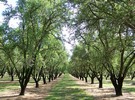Californian researchers are thinking outside the box for methods to deal with drought: flooding. According to Toby O’Green, University of California, Davis soil resource specialist, modern irrigation techniques could actually be detrimental in some ways, so his research aims to solve this problem.
“I think many scientists have recently recognized that as we have improved our irrigation technology and thus limited water losses as deep percolation, we have actually lost a mechanism to recharge groundwater,” he says. “In the past, with less efficient flood irrigation, there was a lot of excess water applied as deep percolation, which recharged the groundwater. Couple the lack of agriculture recharge with drought, and we see big drops in groundwater levels.”
Because of the drought over the last several years, reliance on groundwater has grown significantly. In some cases, wells are going dry. Flooding the land could potentially solve this overdraft problem.
O’Green is currently working on a modeling effort to seek out the best soils to perform flooding activity. The model takes into consideration managed flood events in which water is taken from flooded streams and rivers via existing ditch and canal networks, then used to irrigate fields during the winter.
“The benefits of this practice are that there are approximately 5.5 million acres of suitable ag land for [it],” O’Green says. “There is great potential to offset overdraft in times of water excess, such as El Nino.”
There are some possible disadvantages, though. For example, there’s the potential for groundwater pollution from agricultural chemicals, as well as risk to perennial crops. In addition, excess water could promote disease, O’Green notes.
He points to several other things to consider: “Does the infrastructure exist to route stream runoff in a controlled way to farms? How do water rights apply? Will the State Water Resource Control Board allow this practice, or are permits required?” These questions will likely come to the forefront as more trials are completed.
Trials in almond orchards are underway now, and the practice was successful in alfalfa, according to O’Green. Scientists have also had success flooding vineyards.
Determining how the practice will affect trees is crucial. “Many trees are intolerant of long periods of saturation after bud break,” O’Green says, adding that flooding may prove detrimental to crops that require high nitrogen fertilizer levels, too.
In the meantime, work continues on the new Agricultural Groundwater Banking Index (SAGBI) app. This interactive app considers five major factors critical to successful agricultural groundwater banking: deep percolation, root zone residence time, topography, chemical limitations, and soil surface condition. O’Green’s hope is that the tool will be used for planning purposes to create a more sustainable groundwater resource in California.







